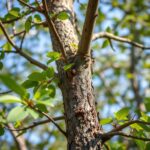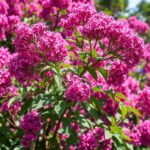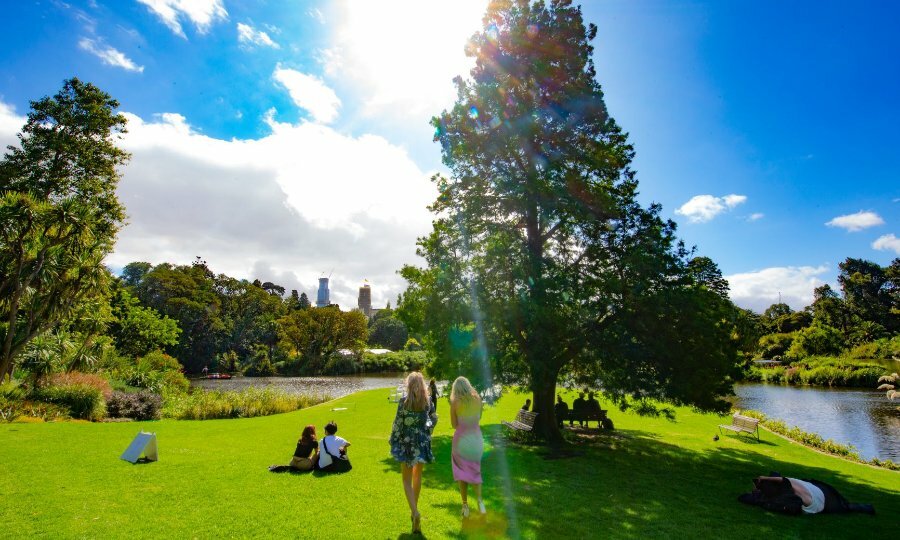Discovering the First European Garden in the Continent of Australia: A Historical Journey

In the heart of Australia lies a hidden gem that marks a significant milestone in botanical history: the first European garden on the continent. This article embarks on a historical journey to uncover the origins, evolution, and enduring legacy of this remarkable site. Established in the early days of European settlement, the garden not only served as a refuge for the settlers but also played a crucial role in the exchange of horticultural knowledge between cultures. Join us as we explore the rich narrative of this garden, its pioneering plants, and its cultural impact on Australia’s evolving landscape.
- The First European Garden in Australia: A Historical Landmark
- Who was the first European to set foot on the Australian continent?
- What is the oldest botanical garden in Australia?
- What is the first botanical garden in Europe?
- What are some fun facts about the Royal Botanic Gardens?
- Questions from Our Readers
The First European Garden in Australia: A Historical Landmark
The first European garden in Australia, established in the late 18th century, marked a significant cultural and botanical milestone on the continent. This garden was part of the Sydney Cove settlement, set up by British colonists who aimed to cultivate crops that would sustain their growing population. The garden focused primarily on introducing European plants and vegetables that were unfamiliar in the new land, demonstrating the clash and blend of ecosystems. Over time, this early endeavor not only helped the settlers adapt to their new environment but also paved the way for the botanical exploration and the establishment of further gardens across Australia, supporting the idea of colonial agriculture and the exploration of unique Australian flora.
Location and Significance
The first European garden was located in what is now known as Sydney, within the borders of the original colony of New South Wales. Its significance extends beyond its immediate function as a source of food; it represented a symbol of European colonization and a connection to the familiar landscape of home. This garden served as an essential site for experimentation with non-native plant species, and its success contributed to the eventual establishment of other formal gardens throughout Australia.
Key Plant Species Introduced
Among the first plants cultivated in this garden were various crops and herbs such as wheat, barley, and various vegetables, which were imperative for the settlers' survival. Additionally, the introduction of ornamental plants exemplified the aesthetic desires of the colonizers, who sought to recreate aspects of their homeland. This initiative not only showcased agricultural ambition but also led to future introductions of Australian native species, creating a unique blend of flora that characterizes Australian gardens today.
Impact on Australian Agriculture
The establishment of the first European garden had a profound impact on Australian agriculture. By cultivating non-native plants, colonizers facilitated the beginning of agricultural systems that relied on imported knowledge and techniques from Europe. This led to the advancement of farming practices, commercialization of crops, and eventually the emergence of rural communities centered around these agricultural activities. This set the stage for Australia's evolution into a significant producer of agricultural goods.
Cultural Exchange and Adaptation
This garden was also a site of cultural exchange, where indigenous Australian practices and knowledge about native plants intersected with European gardening techniques. Although the initial intent was to impose European agricultural practices, the resulting dynamic encouraged settlers to adapt and adopt local methods and flora over time. This blending of traditions marked a complex relationship between the colonizers and the indigenous populations, influencing the landscape and gardening practices in Australia significantly.
Legacy and Modern Gardens
The legacy of the first European garden continues to resonate in modern Australian horticulture. It laid the groundwork for numerous botanical gardens and conservatories across the continent, which celebrate both native and introduced plant species. Today, these gardens serve as historical reminders of the country's colonial past while promoting biodiversity and education. They play an essential role in the conservation of plants and the understanding of the interactions between European and Australian ecosystems.
| Feature | Description |
|---|---|
| Location | Sydney, New South Wales |
| Established | Late 18th century |
| Key Plants | Wheat, Barley, Various vegetables |
| Significance | Cultural and agricultural impact |
| Legacy | Foundation for modern botanical gardens |
Who was the first European to set foot on the Australian continent?

The first European to set foot on the Australian continent was Willem Janszoon, a Dutch navigator and explorer. He arrived in Australia in 1606, aboard the ship Duyfken. Janszoon was not only a pioneer in maritime exploration but also played a significant role in mapping parts of the Australian coastline. His landing marked a key moment in the history of European encounters with Australia, although it would be more than a century later before significant European settlement occurred on the continent.
Background of Willem Janszoon
Willem Janszoon was born in Holland around 1570 and became one of the early explorers in the Age of Discovery. His work primarily involved exploring the coasts of New Guinea and the Australian continent. Janszoon's expeditions were driven by the search for new trade routes and opportunities. His background as a navigator was crucial to the success of his voyages.
- Born in the late 16th century in Holland.
- Worked as a navigator, first engaging in trade before exploration.
- Contributed significantly to Dutch maritime knowledge during the era.
The Voyage of the Duyfken
The Duyfken, meaning Little Dove, was the vessel used by Janszoon for his historic journey. Launched in 1601, it was one of the first European ships to explore the Australian coastline. The journey began in the Dutch East Indies, where Janszoon aimed to chart new territories and search for valuable resources.
- Embarked on its voyage from the Dutch East Indies in early 1606.
- Discovered the western coast of Cape York Peninsula in Australia.
- Increased knowledge about the geography of Oceania for Europeans.
Significant Landing in Australia
Janszoon's landing occurred on the Gulf of Carpentaria. He and his crew spent several weeks exploring the coastline, making observations about the land and its resources. While Janszoon was not the first to claim the land, his exploration marked the first recorded European interaction with the Australian continent.
- Reached the Australian coast around April 1606.
- Named various geographical features, influencing future explorers.
- Documented his findings in logbooks, though many were lost.
Interactions with Indigenous Australians
During his landing, Janszoon and his crew encountered Indigenous Australians, who were living in the area. Their interactions were complex, often marked by misunderstanding and conflict. Janszoon's observations of the local people became part of the early historical record regarding European perceptions of Australia’s Indigenous cultures.
See also:
- Faced resistance from Indigenous groups while exploring.
- Described Indigenous Australians in his logs, though with bias.
- Interactions largely shaped future European attitudes toward Aboriginal peoples.
The Legacy of Willem Janszoon
Janszoon’s exploration laid the groundwork for future European voyages to Australia. Although his landing did not lead immediately to colonization, it provoked interest among European powers regarding Australia. This interest contributed to subsequent expeditions which eventually led to the establishment of settlements.
- Set a precedent for subsequent European exploration of Australia.
- His logs served as reference points for later navigators.
- Influenced the direction of Dutch and later British colonial endeavors.
What is the oldest botanical garden in Australia?

The oldest botanical garden in Australia is the Royal Botanic Garden Sydney. Established in 1816, it was initially used for the cultivation of food plants for the new colony. Located in the heart of Sydney, the garden spans approximately 30 hectares and is home to over 7,500 species of plants. The garden not only serves as a scientific institution but also provides significant aesthetic and recreational value to the public.
History of the Royal Botanic Garden Sydney
The Royal Botanic Garden Sydney has a rich history that reflects the evolution of plant science in Australia.
- Established by Governor Lachlan Macquarie in 1816.
- Initially aimed at food production for the colony, it evolved into a space for botanical research.
- In 1959, it was officially designated as the Royal Botanic Garden.
The Importance of the Garden's Collection
The collection within the Royal Botanic Garden Sydney is vast and varied, showcasing plant species from Australia and around the world.
- Home to more than 1,000 species of native Australian plants.
- Features rare and endangered species, contributing to conservation efforts.
- Contains historic and modern plantings that reflect botanical trends over time.
Educational Initiatives
The Royal Botanic Garden Sydney plays a significant role in educating the public about plant science and conservation.
- Hosts numerous workshops and lectures that engage diverse audiences.
- Offers educational programs for schools to promote environmental awareness.
- Develops research initiatives that advance the understanding of botany and ecology.
Visitor Experience
Visiting the Royal Botanic Garden Sydney is an enriching experience for locals and tourists alike.
- Provides guided tours to help visitors learn about its history and collection.
- Features themed gardens, such as the Calyx and the African Rainforest.
- Includes various events and exhibitions throughout the year that showcase art and culture.
Conservation Efforts
The Royal Botanic Garden Sydney is deeply involved in conservation efforts both locally and globally.
- Conducts plant research programs aimed at preserving biodiversity.
- Collaborates with other institutions to share knowledge and resources for conservation.
- Engages in rehabilitation projects to restore damaged ecosystems in Australia.
What is the first botanical garden in Europe?

The first botanical garden in Europe is the Orto Botanico di Padova (Botanical Garden of Padua), established in 1545 in Padua, Italy. This garden was created with the aim of studying and cultivating medicinal plants, which was essential for the advancement of medicine during the Renaissance. It is recognized by UNESCO as a World Heritage Site due to its historical significance and contribution to the field of botany and horticulture.
Historical Background
The Orto Botanico di Padova was initiated by the University of Padua, making it the oldest academic botanical garden in the world. Its original purpose was to provide a source of medicinal plants for students and professionals in the field of medicine. The establishment of this garden marked a significant shift towards systematic botanical study and the organization of plant species based on their medicinal properties.
- Educational Purpose: It served to educate medical students about the properties of various plants.
- Medicinal Focus: The garden featured a variety of plants used in traditional medicine.
- Scientific Advancement: It contributed significantly to the progress of botanical science in Europe.
Design and Layout
The design of the Orto Botanico di Padova incorporates various sections dedicated to different plant families, showcasing the diversity of botanical life. The garden is structured around a central circular area representing the earth's rotation, surrounded by sections that symbolize the elements of nature.
- Circular Design: The layout is circular, symbolizing the unity of nature and the circle of life.
- Plant Sections: Different areas are designated for specific plant families, illustrating biodiversity.
- Historical Sculptures: The garden features statues and structures that commemorate famous botanists and scientists.
Significant Plant Species
The Orto Botanico di Padova boasts a wide array of plant species, many of which are rare and significant for their historical and medicinal value. It is home to several species that have been used in traditional medicine for centuries.
See also:
- Medicinal Herbs: Many herbs utilized in historical medicine can be found here.
- Endangered Species: The garden works on the conservation of rare and endangered plant species.
- Historic Varieties: The garden preserves traditional varieties of plants used for various purposes.
Influences on European Botanical Gardens
The establishment of the Orto Botanico di Padova set a precedent for the creation of many other botanical gardens across Europe. It served as a model for educational and research purposes, leading to the proliferation of similar gardens in other countries.
- Model for Education: Influenced the establishment of botanical gardens affiliated with universities.
- Research Institutions: Many gardens adopted similar research methodologies for studying plant species.
- Cultural Exchange: Facilitated the exchange of plant specimens and knowledge across Europe.
Current Status and Conservation Efforts
Today, the Orto Botanico di Padova plays a crucial role in both education and conservation. It continues to serve as a research facility while engaging the public with exhibitions and educational programs focused on biodiversity and conservation.
- Research Facility: Ongoing research projects focus on plant taxonomy and conservation.
- Public Engagement: Educational programs increase public awareness about plant conservation.
- Sustainable Practices: The garden promotes sustainable horticultural practices to protect the environment.
What are some fun facts about the Royal Botanic Gardens?

The Royal Botanic Gardens, often referred to as the Kew Gardens, is a designated UNESCO World Heritage Site located in London, England. It serves as a significant center for plant science and botanical education, showcasing a rich collection of flora from all around the world. Here are some fun facts that highlight its importance and uniqueness:
The Largest Collection of Living Plants
The Royal Botanic Gardens is home to an impressive number of plant species, making it one of the most comprehensive botanical collections globally.
- About 30,000 species: The gardens boast approximately 30,000 living plant species, which are carefully cultivated in various themed sections.
- Rare and endangered plants: A significant number of these species are rare or endangered, making Kew a vital sanctuary for conservation.
- Research contributions: The extensive collection supports ongoing research in plant conservation, climate change, and sustainable horticulture.
A Historic Site
Kew Gardens was established in 1759, and it has a rich history intertwined with royal heritage and scientific discovery.
- Royal patronage: Originally developed as a private estate for the royal family, it became open to the public in the 18th century.
- Scientific discoveries: Kew has played a pivotal role in the classification of plant species and was influential in establishing botanical gardens worldwide.
- Architectural landmarks: The gardens feature iconic structures like the Palm House and the Temperate House, showcasing Victorian architecture and plant diversity.
Climate Zones
The Royal Botanic Gardens showcases a variety of climate zones that allow visitors to explore different ecosystems from around the world.
- Tropical rainforest: The Palm House replicates a tropical environment, housing a range of exotic plants including palms and ferns.
- Desert environment: The Alpine House features plants from mountainous regions, illustrating adaptations to aridity and altitude.
- Temperate settings: Other areas support flora from temperate climates, allowing for a diverse experience in plant exploration.
Educational Programs
Kew Gardens offers a variety of educational programs that aim to inspire and inform visitors about plant science and conservation.
- Workshops and lectures: Regular workshops teach skills ranging from gardening practices to understanding biodiversity.
- Research internships: Programs provide opportunities for students and professionals to engage in hands-on research and contribute to ongoing botanical studies.
- Children’s education: The gardens host activities for children, fostering a love for nature and environmental stewardship from a young age.
Visitor Experiences
Kew Gardens offers a wide range of visitor experiences that enhance the enjoyment of its natural beauty and scientific significance.
- Seasonal events: The gardens host seasonal events such as flower shows, art installations, and family days, bringing the community together.
- Guided tours: Knowledgeable guides lead educational tours, providing insights into the history, science, and stories behind the plants.
- Cafés and shops: Visitors can enjoy onsite cafés that serve organic food options and shops selling unique botanical-themed merchandise.
Questions from Our Readers
What is the first European garden in Australia?
The first European garden in Australia is the Botanical Gardens of Sydney, established in 1816. It was designed to support the cultivation and study of plants, playing a crucial role in the introduction of European flora to the continent.
Who established the first European garden in Australia?
The garden was established under the direction of Governor Lachlan Macquarie, reflecting the colonial ambitions of the British Empire at that time. It aimed to create a sustainable environment for botanical research and agricultural development.
What types of plants are found in the first European garden in Australia?
The garden features a wide variety of native and exotic plants, including many species that were introduced from Europe and other parts of the world. This diversity supports ecological research and contributes to the understanding of Australia's unique flora.
How has the first European garden in Australia evolved over time?
Since its establishment, the garden has evolved to include modern horticultural practices, educational programs, and conservation efforts. Today, it serves as a critical hub for biodiversity and a popular destination for locals and tourists alike.
See also:

If you want to read more articles like Discovering the First European Garden in the Continent of Australia: A Historical Journey, we recommend you check out our Landscaping category.
Leave a Reply
Related Articles